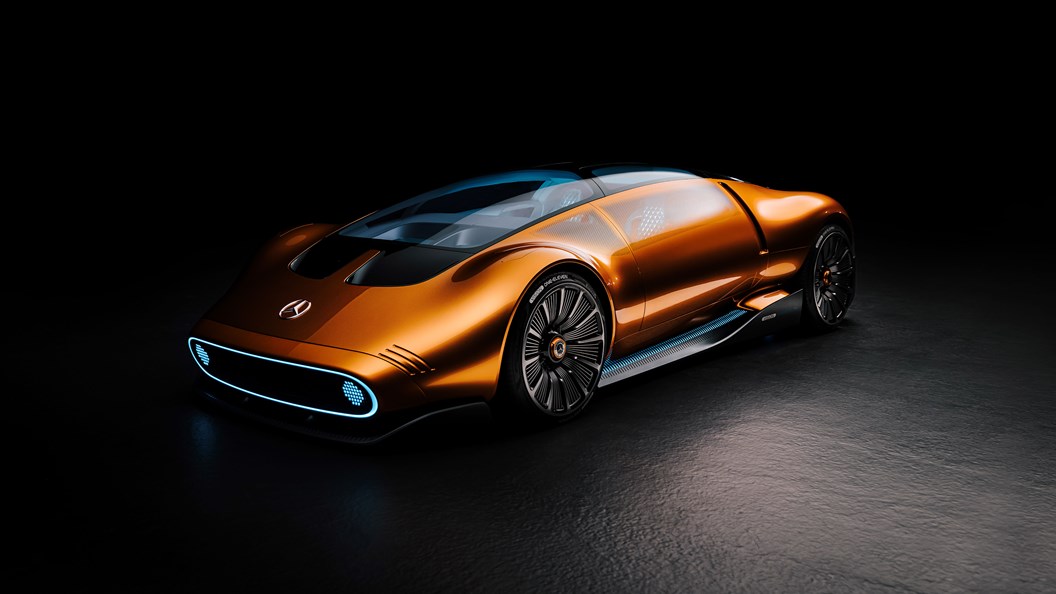
Vision One-Eleven main
► This one’s electric, not a diesel or a Wankel
► Axial-flux tech will filter to road cars… eventually
This is the Mercedes-Benz Vision One-Eleven, a modern-day take on the legendary Merc C 111 concept car. Sitting somewhere between Stuttgart’s recent EQ concepts and the original 1970s design, the Vision One-Eleven is designed to be a new icon for Mercedes’ growing electric portfolio.
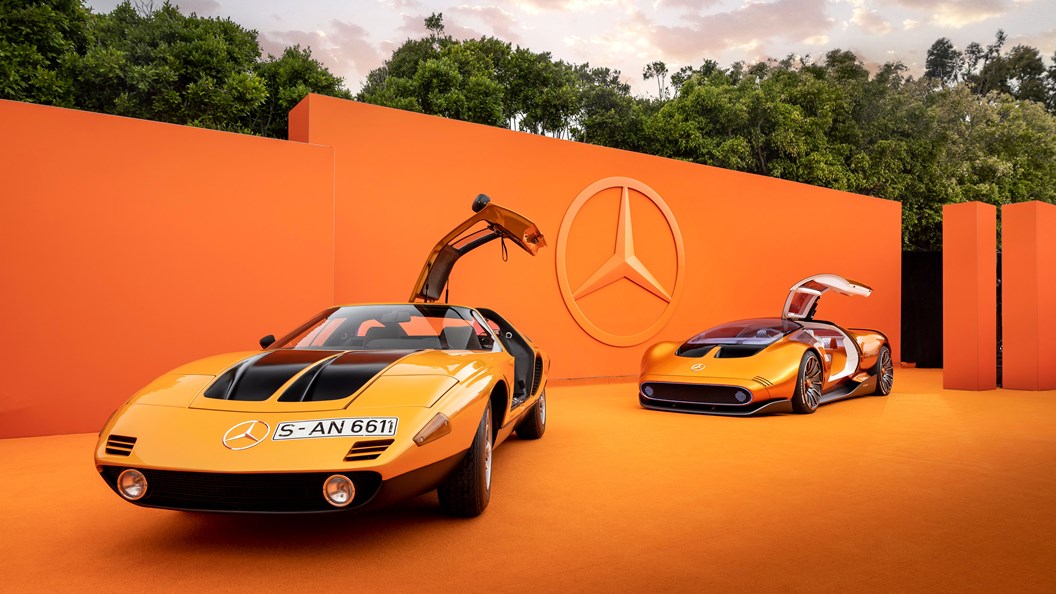
C111 and Vision One-Eleven together
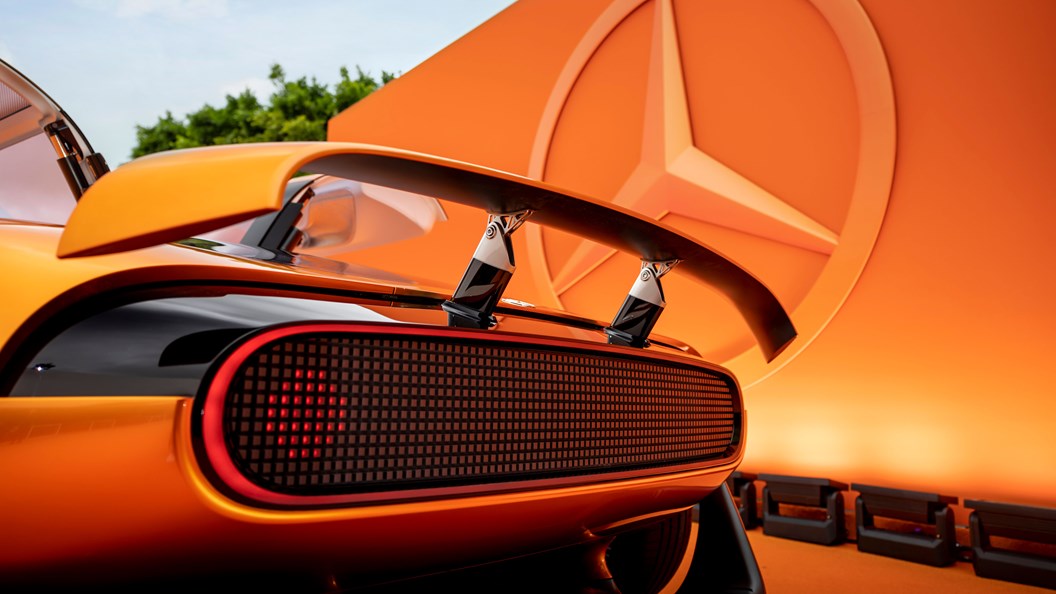
One-Eleven rear spoiler
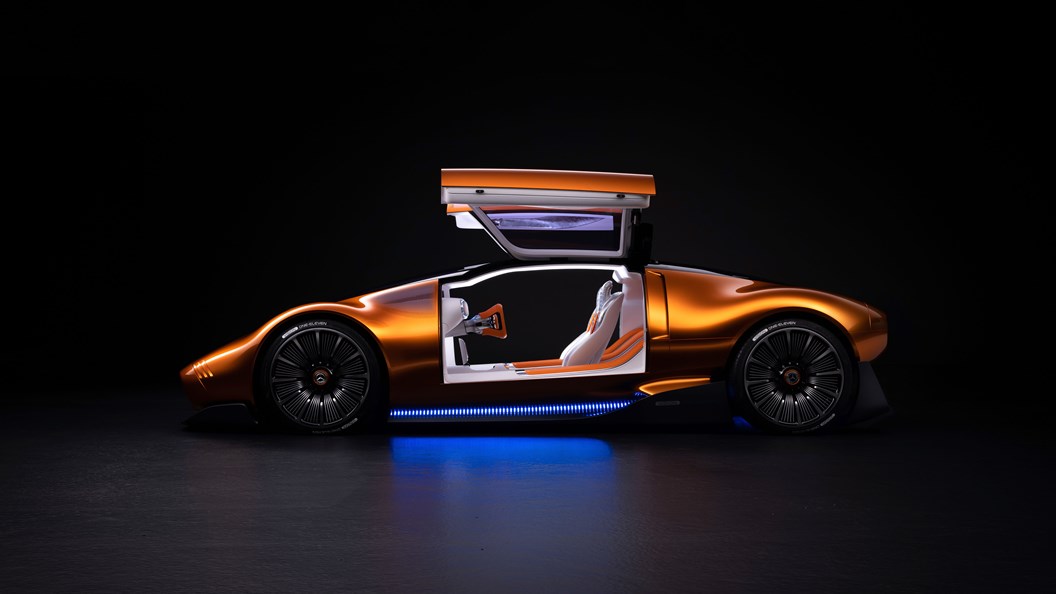
One-Eleven concept side profile
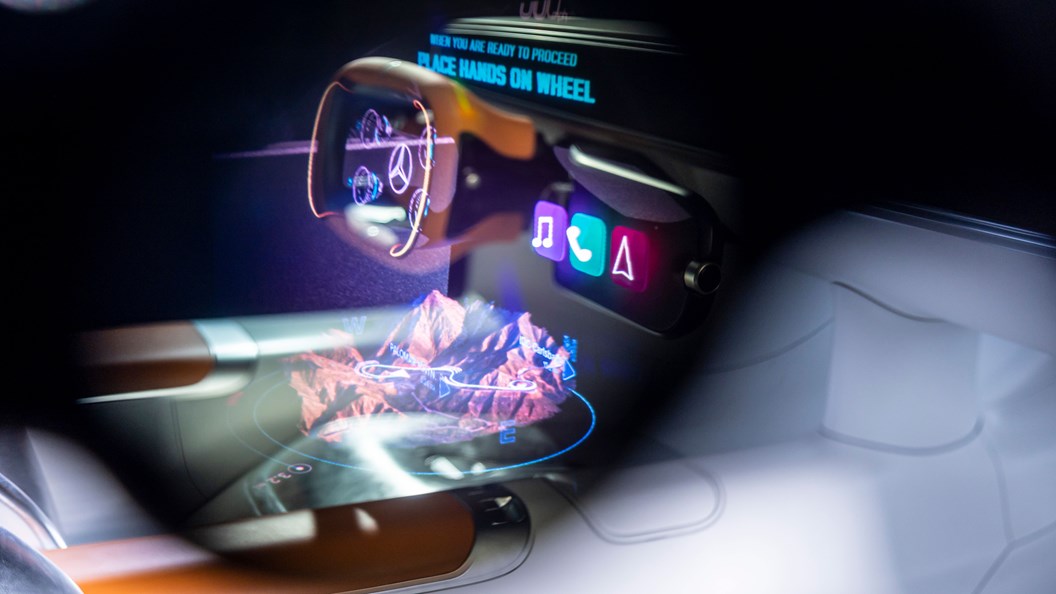
Vision One-Eleven concept steering wheel


One-Eleven interior
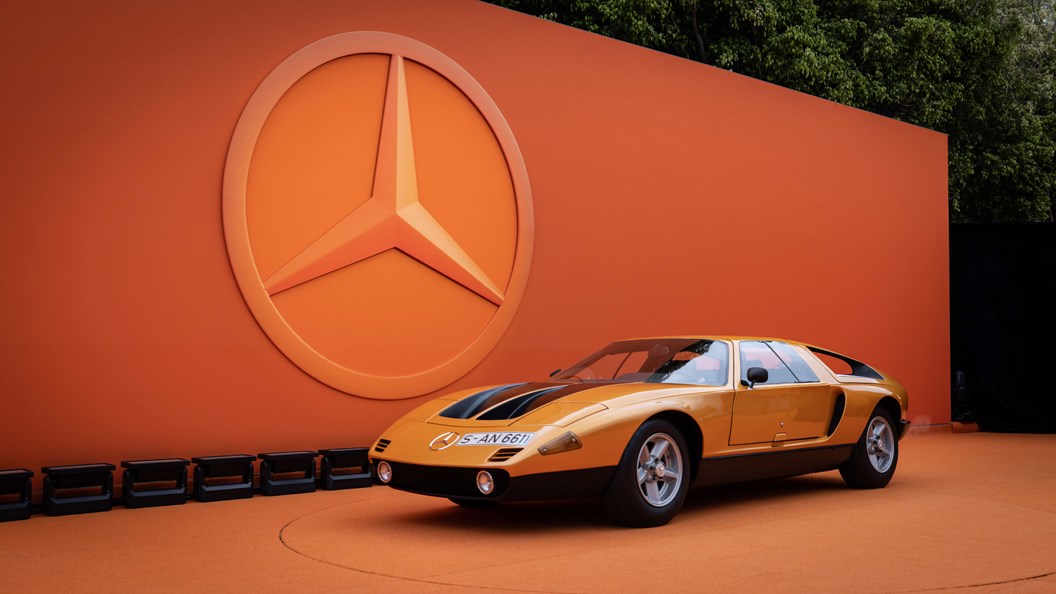
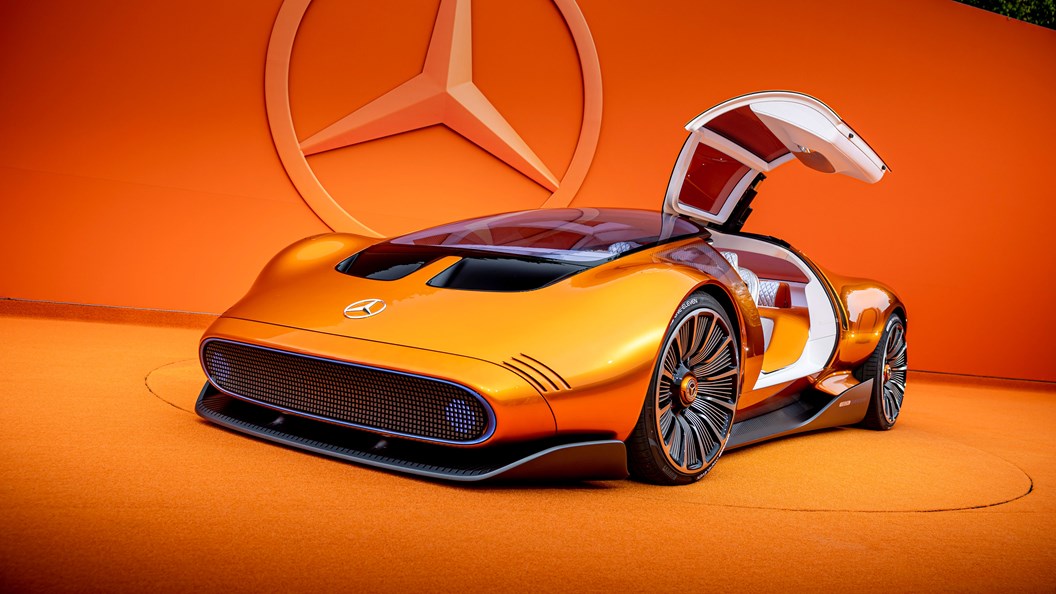

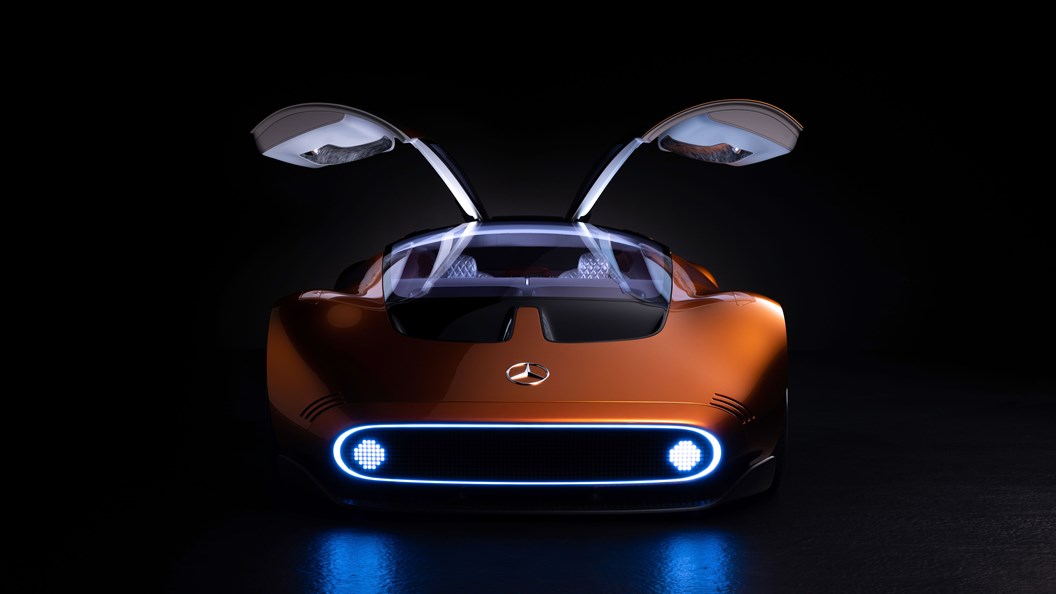
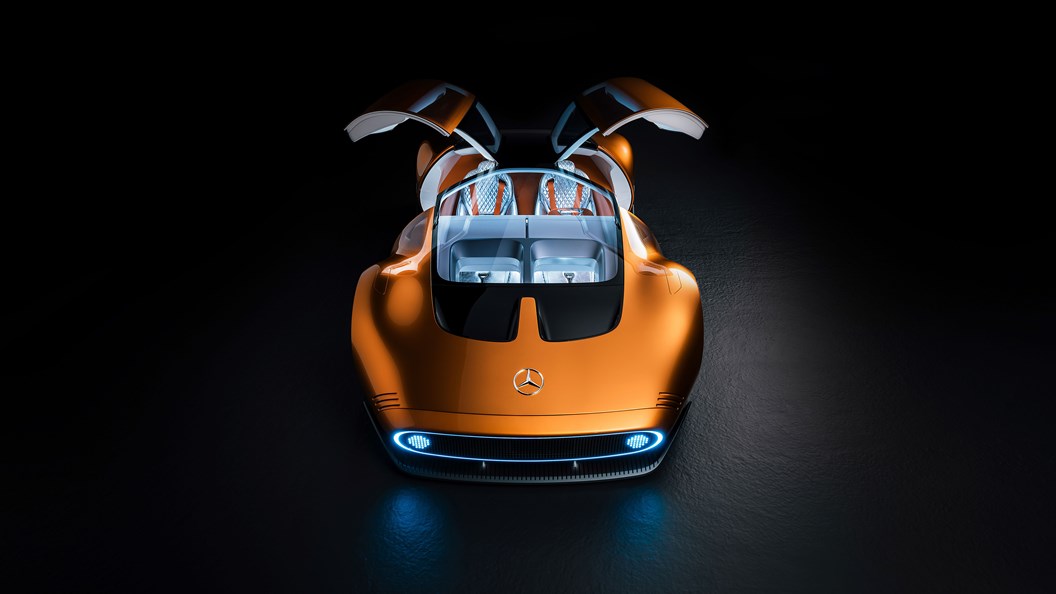
Forward view Vision One-Eleven
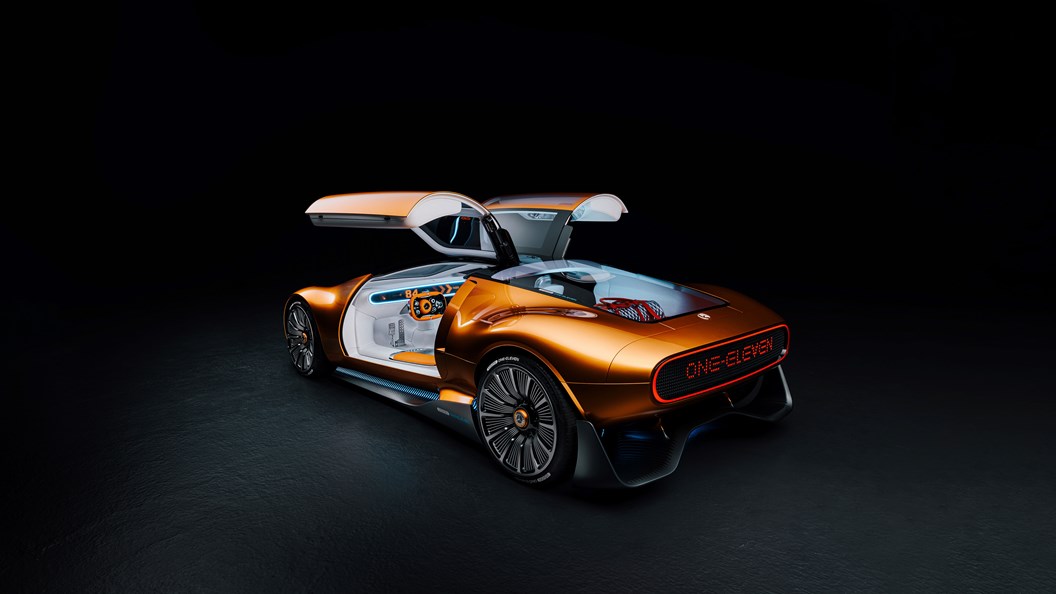
One-leven
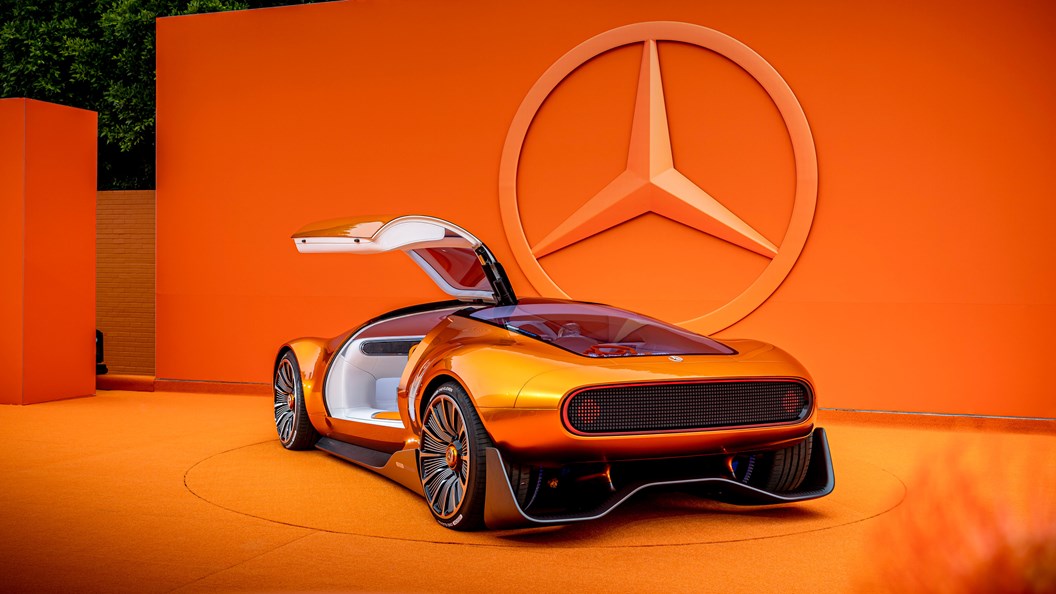
One-Eleven rear view
It’s also a significant marker for how seriously Mercedes is taking its avowed mission to nudge the three-pointed star brand even further upmarket.
The new Mercedes Vision One-Eleven is not merely a supercar – it’s a seriously glitzy, high-end articulation that’s dripping with Daimler’s focus on modern luxury. Not least from its dramatic gullwing doors, opening to reveal a shiny silver interior.
‘Our goal at Mercedes-Benz is not to do styling – our goal is to create icons,’ said Gordon Wagener, Mercedes Group’s chief design officer. ‘To me, that makes the difference between mainstream design and luxury.’
‘Our all-electric vision show car is the modern-day interpretation of the C 111, which was avant-garde at the time. The element of surprise comes from its exceptionally clean, purist, and at the same time, extremely muscular proportions.’
It’s certainly a striking, attention-grabbing orange slice of flamboyance. Be sure to sound off in the comments below.
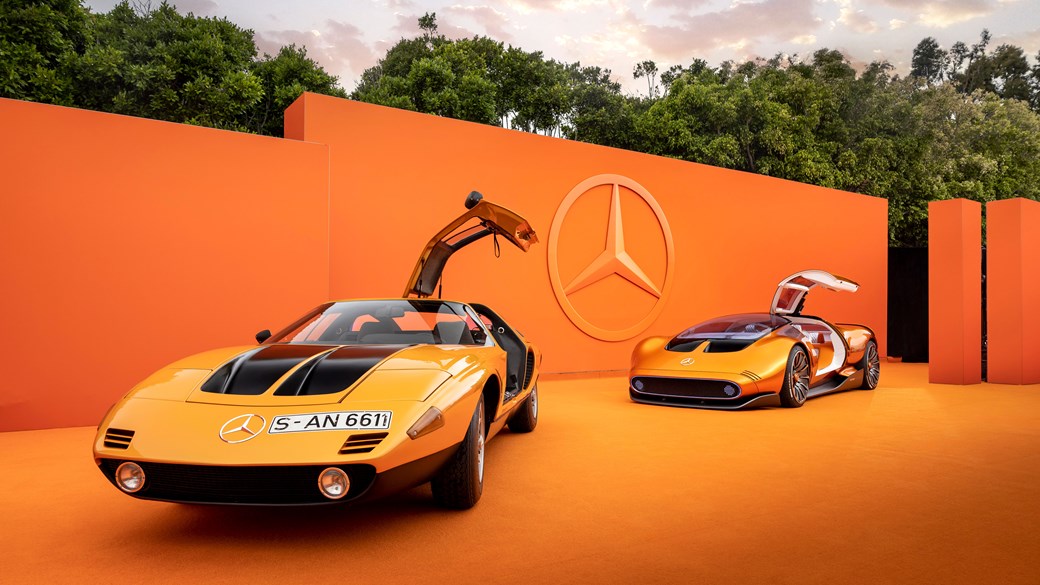
The Mercedes Vision One-Eleven looks familiar…
The Vision One-Eleven may be around half a century newer, but it closely follows the low-slung proportions of the original concept car.
Measuring just 1170mm from the ground and with the same muscular stance as the 1970s original, it’s an interesting fusion of retro curves and the contemporary EQ design language.
The car is finished in a metallic orange colour which should pop out more than the flat hue of the original car and is finished with dark side skirts. CAR has poured all over it and can vouch for how special and luxurious the newcomer feels.
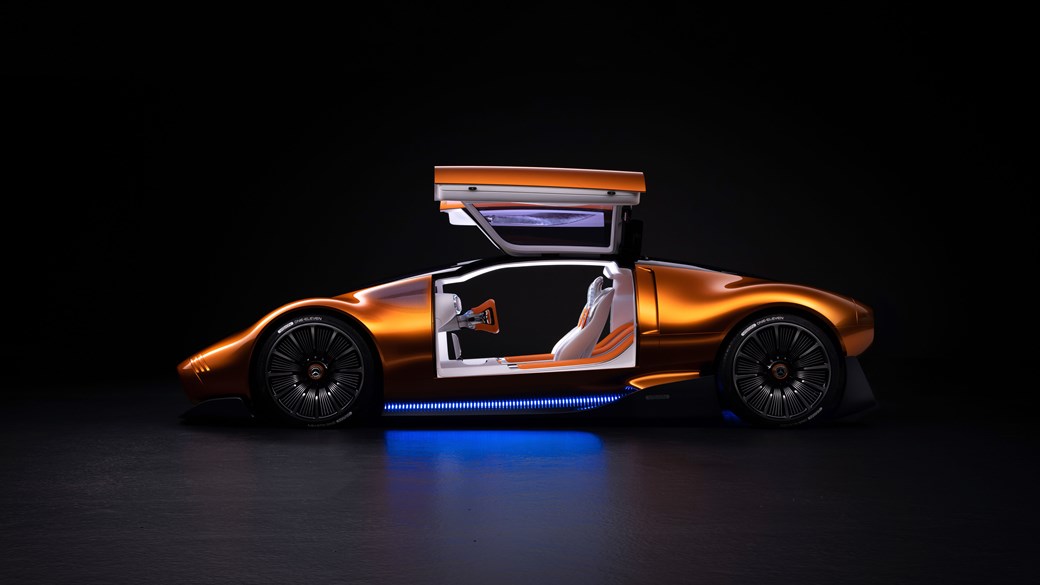
Like other Mercedes EQ concepts, the wheels also echo the visual look of electric windings – once again emphasising the car’s electric powertrain. Oh, and they light up, obviously.
The front of the new car riffs off the pure lines of the original but adds modern, pixellated headlights that echo the round units seen on the original. Like other Mercedes concepts, the matrix lighting bars at the front and rear can also be used to display messages.
Note how the Vision One-Eleven’s aggressive haunches are supported by a huge diffuser at the rear, sitting just below another set of pixelated brake lights. There’s also a retractable spoiler to create downforce at speed.
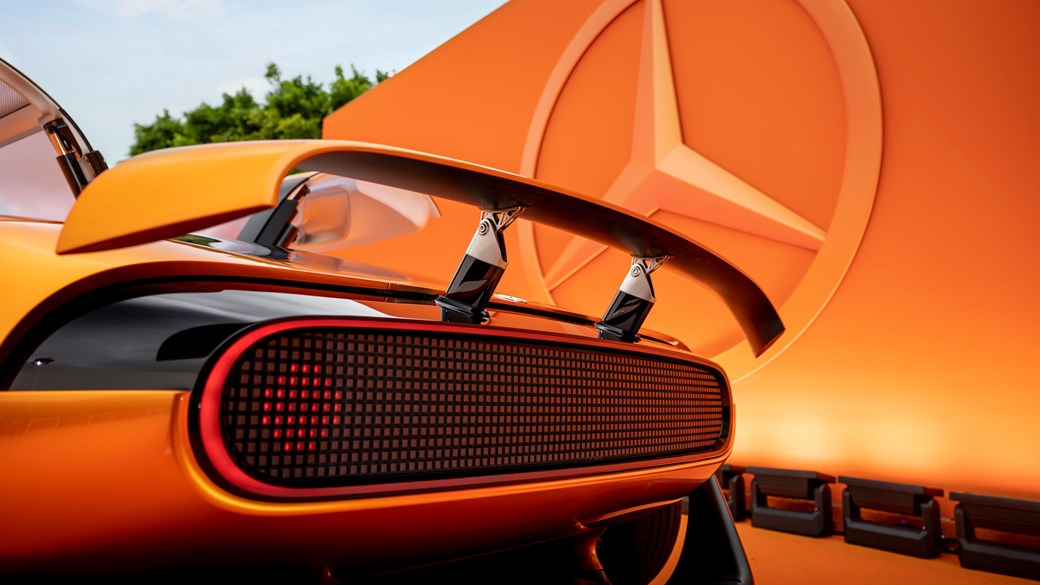
CAR understands the show car is a runner; watch this space to see if it remains a concept car or whether a limited series production run could be authorised. What better way to underline Merc’s move upmarket?
So it’s electric then?Of course, it is. Mercedes has dropped the diesel and Wankel engines of the previous C 111 concepts for an all-electric powertrain, and it’s been developed by Mercedes-owned British battery expert Yasa. With that in mind, the One-Eleven Vision uses a high-performance axial-flux motor and pairs it with new battery tech that uses liquid-cooled cylindrical units.
‘Axial-flux motors are significantly lighter and more compact, yet more powerful than comparable radial-flux motors currently used in 99% of all electric cars,’ said Tim Woolmer, found and chief technology officer of Yasa. ‘In an axial-flux motor, the electromagnetic flow runs parallel to the motor’s rotational axis, which is highly efficient.

‘In a radial-flux motor, the flow runs perpendicular to the rotational axis. Compared to radial-flux motors, they have considerably higher and more enduring power reserves, which delivers a whole new level of performance.’
According to Mercedes, the new tech takes up just one-third of the space and weight of a conventional motor when delivering the same amount of power. And it’ll be on the road soon: Stuttgart’s engineers are working with Yasa to soon bring axial-flux technology to its next-generation performance EVs.
When ready for production, they’ll be produced at the Mercedes-Benz Berlin-Marienfelde plant in Germany.
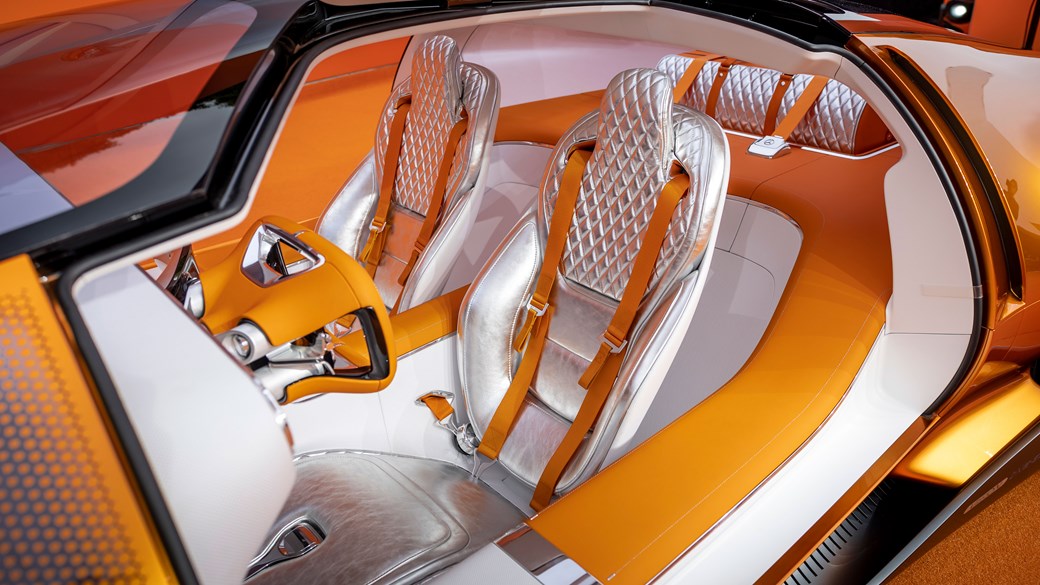
Space suit ahoy! The Mercedes-Benz Vision One-Eleven interior
Like most EVs, the Vision One-Eleven capitalizes on the increased space an electric powertrain affords, and uses all of it to double down on the future-vintage look.
Orange, white, and silver and made in parts with leather, recycled polyester, and recycled coffee bean husks, it’s as much about style as it is about sustainability.
It does look a bit like something from an old sci-fi film, though.
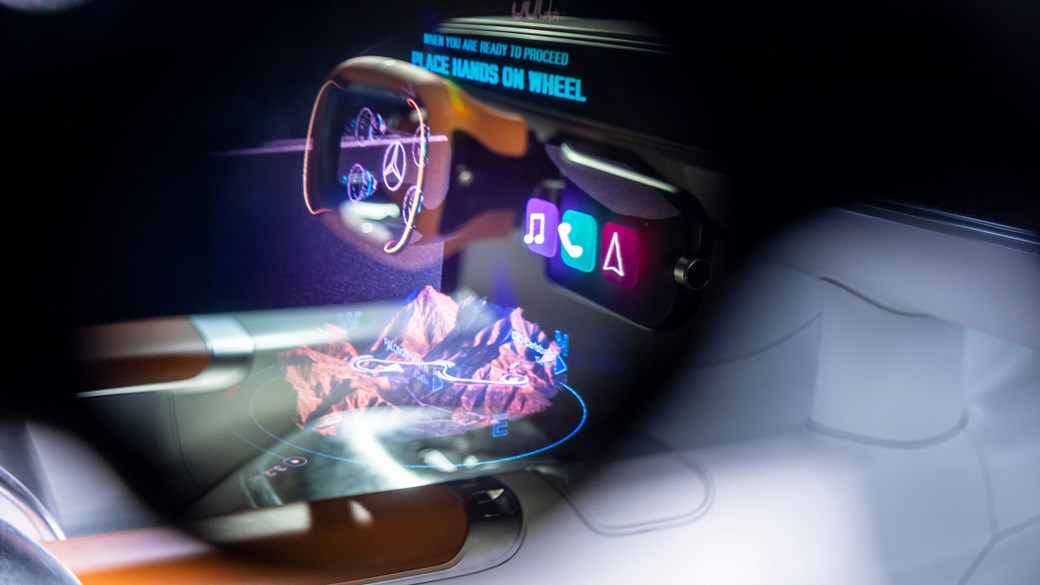
The interior has two modes; Race and Lounge mode, with differing levels of comfort and sporting intent, depending on the driver’s mood. In Race, the driving position is upright and focused, while in Lounge mode the seats fan out, making more liberal use of the interior space.
MBUX infotainment is here too, though in more of a retro capacity than previously seen in Mercedes’ production cars.
A pixelated display stretches across the dashboard (a bit like a digital ticker tape sign you’d seen in a pharmacy), and it’s not exactly high definition. Still, there is AR tech, which can project relevant information when needed.



















